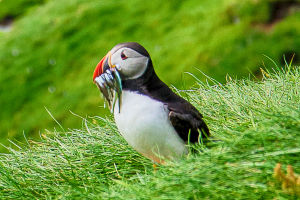
The Art of Soaring

The eagle, a majestic and elegant bird of prey, has long captivated the human imagination with its grace and power.
The sight of an eagle soaring effortlessly in the sky leaves a lasting impression on anyone fortunate enough to witness it.
Among the many remarkable behaviors of eagles, one of the most fascinating is their ability to glide through the air without flapping their wings for extended periods.
This seemingly effortless flight raises a curious question: how do eagles manage to achieve this remarkable feat? To uncover the mystery, let's delve into the scientific principles behind this phenomenon.
To understand how eagles can soar so gracefully, we first need to consider the nature of the Earth's atmosphere. The air around us is not static; it constantly moves, influenced by various factors such as temperature and terrain.
Related
 Cats purr not just from contentment but also to communicate emotions and aid in healing.
Cats purr not just from contentment but also to communicate emotions and aid in healing.
 Exploring the Arctic world of the Atlantic puffin, from sea to sky and back again.
Exploring the Arctic world of the Atlantic puffin, from sea to sky and back again.
 You can analyze some of your cat's emotions through their facial expressions.
You can analyze some of your cat's emotions through their facial expressions.
 Green Anole does 100 push-ups a day and is not afraid of storms!!
Green Anole does 100 push-ups a day and is not afraid of storms!!
 What are the most beautiful horse breeds? And why do they look so lovely?
What are the most beautiful horse breeds? And why do they look so lovely?
 Can owls truly rotate their heads 360 degrees?
Can owls truly rotate their heads 360 degrees?
When air is heated, it rises, and cooler air flows in to replace it, creating a cycle of rising and falling air currents. This movement of air is a crucial element in the eagle's ability to glide.
In mountainous regions, where eagles are often observed, the interplay of rising and falling air currents is particularly pronounced. When an eagle takes off from the top of a mountain, it often begins by circling in place, gradually ascending higher and higher.
This ascent is facilitated by the use of updrafts, which are columns of rising air created by the uneven heating of the Earth's surface. As the eagle reaches a certain altitude, it transitions into a glide, allowing gravity to pull it forward and downward.
Although it loses altitude during this glide, the eagle can cover significant distances without expending much energy.
Eagles possess several anatomical and physiological adaptations that enable them to exploit these air currents effectively. One of the most notable adaptations is their large wingspan, which provides the necessary lift to stay aloft with minimal effort.
The broad wings of an eagle are designed to catch rising air currents, allowing the bird to gain altitude without flapping. Additionally, eagles have specialized feathers that can adjust to the flow of air, helping to maintain stability and control during flight.

The ability to sense and utilize air currents is not unique to eagles; other soaring birds, such as vultures and albatrosses, exhibit similar behaviors. These birds have developed keen sensory abilities to detect subtle changes in air pressure and temperature, enabling them to locate and ride updrafts and thermals.
This skill is also observed in human-engineered gliders, which rely on the same principles to stay airborne. Glider pilots, much like eagles, use visual cues from the terrain, clouds, and even other soaring birds to find rising air currents and maintain flight.
The study of eagle flight provides valuable insights into the broader field of aviation technology. By observing and analyzing the flight mechanics of eagles, scientists and engineers can develop more efficient and innovative aircraft designs.
For example, the concept of bionics, which involves mimicking biological systems to solve engineering problems, draws heavily from the natural world.
The eagle's ability to glide with minimal energy expenditure has inspired advancements in the design of wings and flight control systems for both manned and unmanned aircraft.
Moreover, understanding the flight behavior of eagles contributes to conservation efforts. By studying their migration patterns, habitat preferences, and responses to environmental changes, researchers can develop strategies to protect these magnificent birds.
Conservation programs often rely on data gathered from tracking the movements of eagles and other raptors, providing crucial information for preserving their populations and habitats.
In essence, the eagle's graceful gliding in the sky is not just a survival strategy but also a testament to the wonders of nature. Through a scientific lens, we gain a deeper appreciation of the intricate mechanisms that enable this extraordinary behavior.
The eagle's flight is a harmonious blend of biology, physics, and environmental interaction, showcasing the remarkable adaptability of life on Earth.